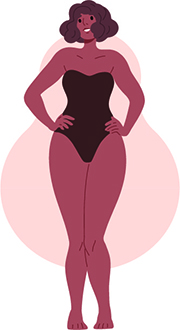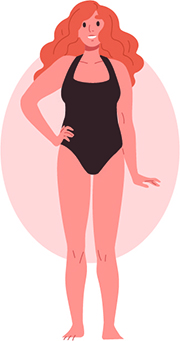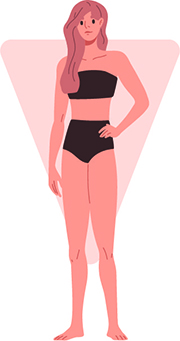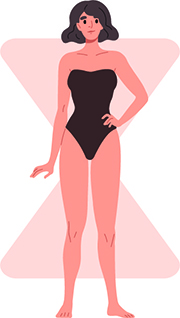International sewing patterns
International
sewing patterns
No language barrier · 9.500 patterns from 37 countries · incl. translation help
No language barrier · incl. translation help
9.500 patterns from 37 countries
Natural fabric
Those natural animal or plant-based fibres occur in nature and can be found in animal coats, plant seeds, plant stems or leaves. Natural fabrics are the most ancient ones in human history and they've been used for thousands and thousands of years. For example egyptian mummies were often bound with linen cloths. The oldest fabric ever found was discovered in Turkey and dates back to 6500 BC. It is a kind of linen fabric.
Natural fabrics are still really common today and used for clothing and all sorts of accessories. The process of making a natural fabric is long and it takes a lot of effort for the final fabric to be finished. Usually, natural fibers take up large amounts of land to grow the plants or raise the animals. These lands obviously also need supervision by farmers. Afterwards the fibers can be collected from seeds, steams, leaves or the animal coats. During the following process, the fibers are being cleaned, woven or knit into yarns. Those yarns can then be bleached and colored. This allows a wide variety of fabrics from one single type of natural fiber. The process of manufacturing natural fabrics and textiles often requires chemicals such as bleach and dye, which causes concerns about the environment, including pollution and the use of litres of water. Despite those problems natural fabrics are sustainable because they're made out of renewable and natural fibres and valued for their softness against the skin. In addition natural fabrics are easier to dispose of than synthetic ones, and they are usually biodegrade.
Types of natural fabrics
Natural fabrics come from many different sources, including plants, animal coats, plants' stems, etc. One way to classify natural fibers is by dividing them into different categories according to their source.
Seed fibers
Those fabrics are made out of fibers collected from the seeds of a plant. The most known seed fibers are cotton fibers. Cotton fabric is well known for it's breathability and robust feature.
Fibers from the stem
Natural fibres can also be collected from the stem of a plant. Fabrics like Linen, Ramie or Jute are made out of stem fibers. Bamboo fabrics are made from fibers from the stem as well.
Fibers from animal wool
Wool that is knitted into fabrics is usually made from an animal-based fiber taken from animals like sheep, alpacas, cashmere goats or mohair goats. Sheep wool is the most commonly used wool out of all animal wools, while cashmere is one of the softest and most elegant. Wool fabrics are very warm and insulating and have a soft touch in addition.
Silk
Silk fibers are collected from the silk worm. Silk is on of the softest and most elegant natural fabric on the market. The collection of silk fibers is really time consuming as the silk worms only produce very little amounts of fibers which is why silk fabrics are quite expensive.
Obviously there are many more types of fabrics available than just cotton, silk, wool, and linen. Those mentioned were just examples.
Advantages
Natural fabrics have a few great attributes and advantages towards synthetic fibres. First of all a natural fabric is usually better for the environment than synthetic materials as it is made from sustainable resources. Most natural fabrics are biodegradable, breathable, moisture wicking and able to absorb large amounts of water or moisture. Furthermore they are usually durable and heat responsive, which means that they act cooling in hot environments. Because the fabrics are heat responsive and can absorb a lot of moisture they are perfect for always leaving you feeling dry and fresh. Especially linen is a really good fabric with great cooling characteristics. Another advantage of natural fabrics is that they are really skin friendly and soft. A lot of natural fabrics like linen have antibacterial properties and hypoallergenic qualities and are suitable for people that suffer from allergies. This makes natural fabrics great for clothing and home accessories like bedding. Especially baby and kids clothing has to be really soft and gentle on the skin which is why natural fabrics are really suitable.
Natural fabrics can also be grown organically which makes them more expensive but also decreases the input that fabrics and textiles have on the environment. In addition natural fabrics that were produced organically ensure that there was no use of pesticides and chemicals in the production process, which makes them even more skin friendly and avoids skin irritation.
Disadvantages
As already mentioned natural textiles offer a lot of great qualities, but there's also a few little disadvantages some natural fabrics can have. Firstly natural fabrics tend to shrink during the first wash, which is why you should always wash them before starting a sewing project. This way you can prevent that your final clothing piece is too small. Some natural fabrics are likely to wrinkle. If you like your fabric nice and plain you will have to iron it after washing it. Another disadvantage of natural fabrics is that they might wear out after a many uses and washings. Furthermore natural fabrics are a bit more expensive than most synthetic fabrics. If your fabric wasn't produced organically the chemicals and pesticides used in the production process might cause skin irritations and rashes if you have sensitive skin. So if you know you are allergic to some chemicals you should try to buy natural and organic fabrics like organic cotton.
Comparison
While synthetic fabrics might be cheaper and easy to care for, natural fabrics are usually better for the environment and our personal health, especially our skin. The textile and fashion industry nowadays is well developed and able to produce synthetic fabric that almost feels and appeals like natural fabrics and offers great qualities as well. But natural fabrics are still well known and popular for their amazing qualities like being breathable, soft and gentle on the skin, moisture wicking and biodegradable. Another reason why choosing natural fabrics over synthetic ones is the environmental aspect. As mentioned earlier natural fabrics come from renewable sources like plant seeds and stems which can be regrown. Those materials decompose without any harm to the environment and can easily be recycled or reused.
There is a wide variety of different natural fabrics in many great colors, with or without amazing prints. They all offer their own special qualities and features and everyone can find a suitable option for them.
90% PDF or Freebooks - immediately available
Categories
Filter selection
What is my body shape?

Pear
- Narrow shoulders
- Slim waist
- Strong hips/ thighs
- Round bottom

Rectangle
- Slim, straight stature
- Small bust
- Straight waist
- Small bottom

Round
- Large bust
- Pronounced body center
- Strong thighs
- Slim legs

Inverted triangle
- Broad shoulders
- Medium to large bust
- Rather straight waist
- Slim legs

Hourglass
- Narrow shoulders
- Slim waist
- Stong hips/ thighs
- Round bottom
Natural fabric
What are natural fabrics?
Natural fabrics are textiles that are made from natural fibers like cotton, linen, wool or also animal coats. While synthetic fabrics are man-manufactured and produced from chemicals/synthetic fibers like polyester, nylon or acrylic.
more seen below...
Welcher Körper-Typ bist Du?

A-Typ - Birne
- Schultern schmal
- Taille schlank
- Hüften/ Oberschenkel kräftig
- Po rund

H-Typ - Banane
- Statur schlank, gerade
- Oberweite klein
- Taille gerade
- Po klein

O-Typ - Orange
- Oberweite groß
- Körpermitte ausgeprägt
- Hüften kräftig
- Beine schlank

V-Typ - Apfel
- Schultern breit
- Oberweite mittel bis groß
- Taille wenig ausgeprägt
- Beine schlank

X-Typ - Sanduhr
- Schulter + Hüfte ähnlich breit
- Oberweite groß
- Taille schlank
- Po rund



